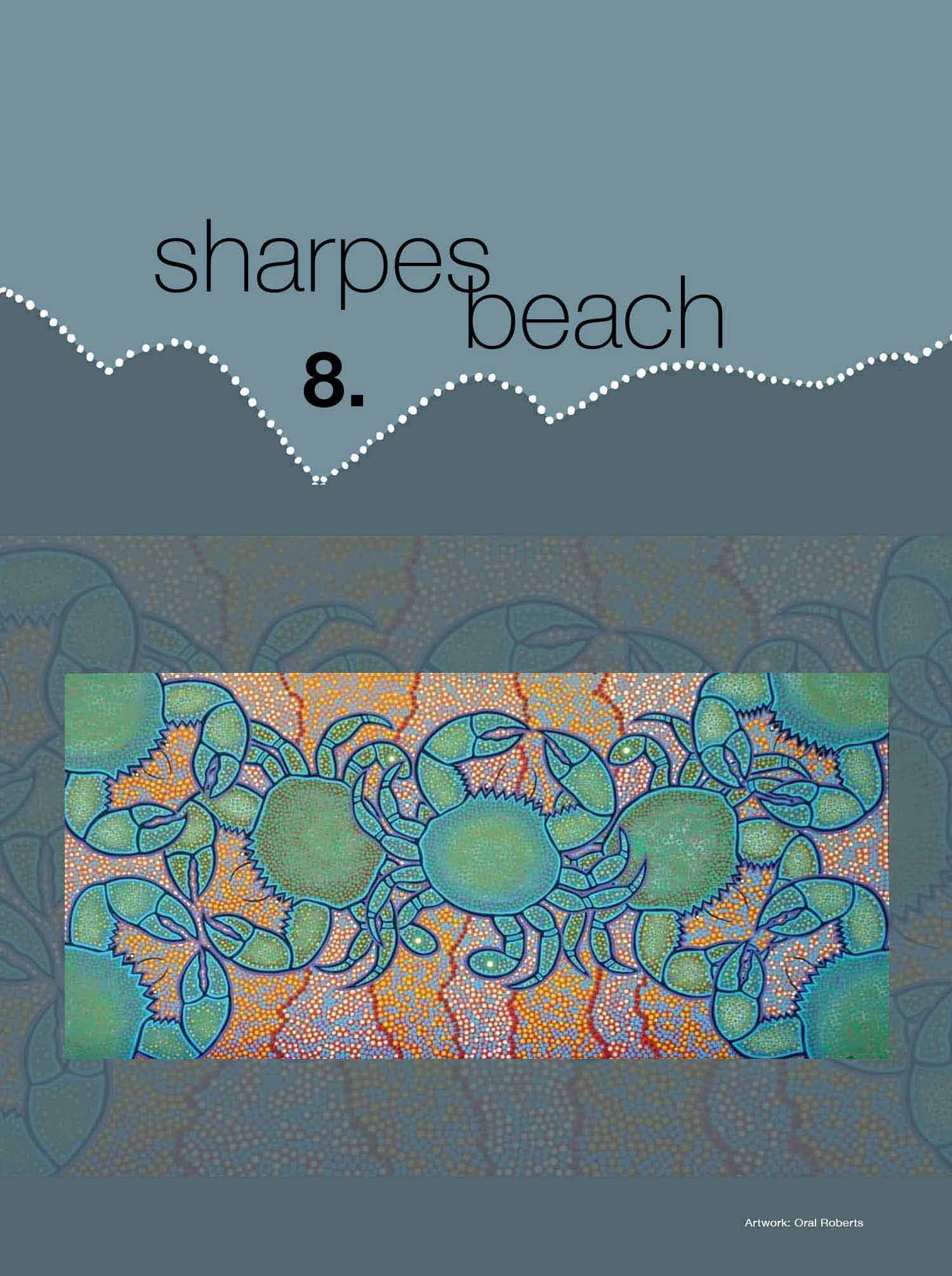The title of this artwork is “Crabs”. The artist Oral Roberts describes it as being inspired by crabbing in East Ballina.

Along the Coastal Recreational Path ...
The immediate and direct connection between Aboriginal people and the plants and animals they lived amongst is a thread running through many stories Bundjalung people have been prepared to share with us relating to the local area.
The story in the sign
Aboriginal knowledge holders for this local area have consented to share this story with you. Please remember that creation stories are a precious cultural resource specifically linked to the process of understanding and caring for Country.
The content of the story must remain unchanged and is best told in context on Country.
It should also be recognised that different versions of the story may apply at different locations. This is a version appropriate for this section of the Ballina coastline.
The scroll through section below presents the story contained in the sign at the Sharpes Beach Carpark.
The Man Who Killed The Porpoise
A story told by Bob Turnbull. Bob Turnbull was a Bundjalung man who told this story in 1958.
ABOUT THIS STORY: A porpoise is the preferred name used by the old people, however, they are also more commonly known as dolphins today. This story is about sustaining food resources and teaches young Aboriginal children to respect traditions, to work together with the land and sea, and to not be greedy.
These traditions for catching fish were practiced by Aboriginal people of the Ballina district and a special place for porpoises (dolphins) can still be seen as a sand spit in the Richmond River (across from the main town centre).
The image below presents the story contained in the sign on site at the Sharpes Beach carpark.



